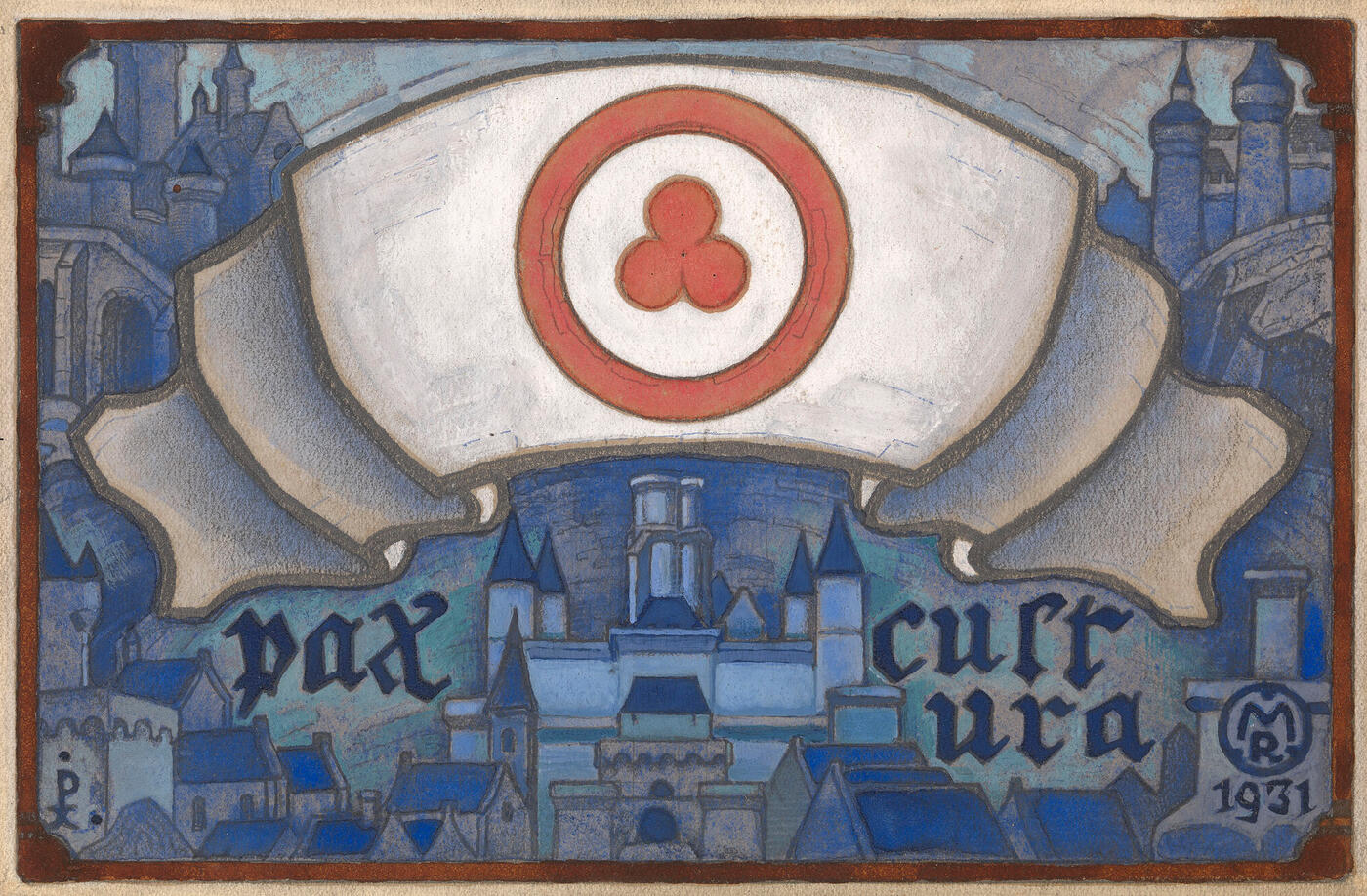MacDougall's Russian Art Auctions 27-30 May 2012
27 May 2012

* 27. ROERICH, NICHOLAS (1874-1947)
Banner of Peace, signed twice with the monograms “NR” and “MR”, inscribed “pax cultura” and dated 1931, further numbered “no. 38” on the reverse.
Pencil and tempera on paper, laid on board,15 by 23 cm (sheet size).
300,000–500,000 GBP
Provenance: Roerich Museum, New York, USA, 1932–1935.
Collection of Nettie and Louis Horch, USA, from 1935.
Thence by descent.
Private collection, USA.
Exhibited: Roerich Museum, New York (permanent collection), 1932, No. 38.
Literature: Nicholas Roerich’s personal list of paintings from 1931, listed as “No. 38. Znamya mira”.
Roerich Museum, inventory list (1931–1935), listed as “Banner of Peace. 1931. $500, sent to Paris for making postcard and later transshipped to New-York.”
Throughout his entire life, Nicholas Roerich addressed the idea of the protection of culture as being vital to the development of humanity. The damage wreaked on historical monuments and works of art during the First World War convinced him of the necessity of resolving these problems on an international level. In order to realise these aims, it was proposed that a league for the protection of culture should be created, and that a treaty on the protection of artistic and academic institutions and historic monuments should be drawn up: the so-called Roerich Pact. In addition to other measures, the authors of this document proposed that state governments draw up an inventory of significant cultural monuments which, in the case of military conflict, should be declared neutral and not used for military purposes and which should accordingly be assured protection. It was proposed that these objects be marked with a Banner of Peace, much like medical institutions are marked and protected by the banner of the Red Cross.
Roerich had already begun work on the design for the Banner of Peace by the end of the 1920s. He purposefully chose a symbol which is found in all civilizations in some form or another and which would be understood without preconceptions by the most varied cultural traditions. Roerich’s plans began to come to fruition in September 1931 with the organising of the First International Conference of the Roerich Pact in Bruges, which convened the representatives of more than 20 countries and over 100 delegates from numerous social, academic and cultural organisations. As a result of these endeavours, the Roerich Pact was officially signed on 15th April 1935 in Washington.
It was with this First International Conference, the starting point for recognition of the Pact, that the publication of the postcard with Roerich’s design for the Banner of Peace was timed to coincide. This design is essentially one of the first publications of the Banner in the form in which it was adopted by the international community.
Notes on symbols:
* Indicates 5% Import Duty Charge applies.
Ω Indicates 20% Import Duty Charge applies.
§ Indicates Artist's Resale Right applies.
† Indicates Standard VAT scheme applies, and the rate of 20% VAT will be charged on both hammer price and premium.